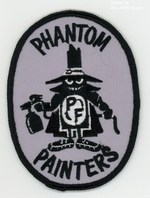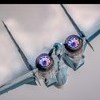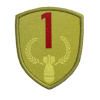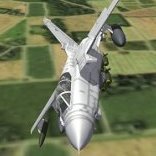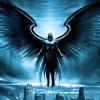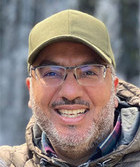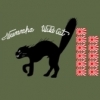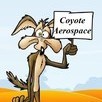Leaderboard
Popular Content
Showing most liked content on 03/28/2022 in all areas
-
17 pointsSome "new" E's I'm working on...... Rebuilt/remapped model, new SUU-23/A gunpod also, not up to Ravenclaw standards but better than stock......for me anyway. No decals on any of these birds.....just because I cant be bothered to make em
-
11 pointsMy other car is a Jaguar..... Gas mileage ain't great, but she sure is pretty.
-
9 points
-
8 points
-
6 points
-
5 pointsIn early 1991 12 MiG-23ML of the former Jagdfliegergeschwader 9, based at Peenemünde, were ferried by former east german pilots to Ramstein AFB. It was the last flight of german MiG-23s. The planes were a present of Germany to the USAF for the preparation of the Gulf War. The 12 MiG-23ML were shipped to the USA and were used their at Nellis AFB as part of the Aggressor Force of the Red Flag exercises. Before the USAF got the german MiG-23ML the Aggressor pilots called the 23 as a bad plane. After flying the MiG-23ML nobody of them called the Flogger as a bad plane anymore. And finally a real picture of the MiG-23ML at Ramstein AFB. Today one of the german MiG-23ML is to be seen at Evergreen Air & Space Museum Oregon in its original camo and insignia. http://www.theedges.org/Aviation/Aeroplane_Museums/Evergreen/evergreen_Mig23_Flogger.html It is also said, that one 23ML is exhibited at Nellis AFB museum, but with iraqi camo and insignia.
-
4 points
-
4 points
-
4 points
-
3 pointsHad a bolter because I forgot to put the hook down. Then again I came back in and caught the wire:
-
3 pointsHello everyone, I want to share some advice with anyone who is thinking about, has tried, or is in the middle of creating fictional nations for SF2 or any simulation. I have met and talked with various people who have attempted to do this. After going through errors and trials of writing a book for the fictional nations, I learned what appears to be the most practical ways of doing it. I want to share it so any of you who want to try it realize that it is not a difficult thing to do. Consider it as your new additional hobby. Creating the new nations led me to research the various countries based on where the fictional nations are located geographically. It involves learning the basics of the cultures, languages, and history. It opened my eye to the bigger world. It is one of the most enjoyable things I have done as the book grows. You are NOT required to do deep research and earn a degree in culture, history, or tongue. You can dip yourself into their world and get tastes of it by researching or watching youtube, unless you want to go further on certain parts, such as the cultures, history, or languages. It also depends on how much depth you want the nations to have. Some of the authors wish countries to have a lot of depth to immerse you with it. At the same time, some authors only want to give fictional nations a little deep so that the audience can fill the gap with their imagination, based on the amount of Depth, the author, gave it. TOOLS Writing a book makes it a fun hobby, and it is also beneficial to have as a reference for you to build the mods based on. Here are the following tools I used to work on the projects of creating fictional nations: - Microsoft Word (To create a book) - Microsoft PowerPoint (See note below) - GIMP - Paint Shop Pro (NOT required, since you can use GIMP for free. I use PSP to re-size the map while preserving the quality as possible.) - Microsoft Paint I will explain how and why I use each tool, so you can get an idea of how they can be helpful to you too. Microsoft PowerPoint = Besides Microsoft word, PowerPoint is the most helpful tool I ever used when copying and pasting from gimp, PSP, and Microsoft paint. It allows me to place certain materials along with other materials. At once, when it is done, by selecting all materials, you can copy and paste it into GIMP as a new image in one piece with transparent background. It is how many decals were designed with precise positioning. GIMP = It is the best free graphic design tool up to date. You can use it to create the skins, import the template (PSP), export .tga for SF2, and other valuable features. I highly recommend it if you want an alternative to PSP. Paint Shop Pro = I use it to enlarge the image to 4K or beyond while preserving the quality possible. The maps were made by enlarging them to 4,000 x 4,000 or more. Then reduce the size for PowerPoint and book. That is how you can have a high-quality picture. Just a warning, it will take up a lot of space when doing it. Microsoft Paint = I use it to quickly copy any image (square or rectangle shape only) and then paste it into a book if the formatting is messed up when copying from PowerPoint to Microsoft Word. If an image does not have four straight edges (Square or Rectangle), I use GIMP instead. Microsoft Paint takes a second to load up, paste from PowerPoint, and copy and paste into Word. Designing the nations Here are the most foundation of designing fictional nations: 1. The purpose of the fictional nations 2. What kind of conflict do they face? 3. The location of the nation’s geographically 4. The cultures, language, and history of the nations 5. The era they are based on 6. The evolution of the Nation’s map (from the birth to the target era) (1) The purpose of the fictional nations = By starting the project, ask yourself, “Why do you want to create the fictional countries? What kind of projects are you working on? At once, when you get this solid, you are ready to start from there. (2) What kind of conflict do they face? = Now, this is the essential part of the project; what type of conflict do you intend for the nations to face initially? When I wrote the book about Saad and Zafir, initially the way they were designed, they were meant to conflict with each other, based on their border and actions that caused them to be angry with each other as the primary point in the story. (3) The location of the nation’s geography = Once you determine the location of the countries you designed, it will be the critical point for the nation’s culture, languages, and history. You don’t have to be too specific or make too many depths on them, as stated before. It can be minimized and have the audience fill the gaps with their imagination when you have enough depth. It is ideal for keeping it simple yet enriched with stories and pictures. It can be as simple as having a few paragraphs with images on each page. They say that the picture speaks a thousand words. (4) The cultures, language, and history of the nations = Once the nation’s location is set, it is ideal to look at an existing country from the site for the cultures and language. For example, in my project, Saad is located where modern Eritrea is. Culturally Eritrea is Christian, Muslim, and a few others. According to Wikipedia, The language of Eritrea is Tigrinya, Tigre, Kunama, Bilen, Nara, Saho, Afar, Beja. Tigrinya, Arabic, English, and historically Italian serve as working languages. This is where I gave Saad the culture of being primarily Christian with their own government system in modern era. Saad used to be Monarchy with the king from early era. with a similar language of Eritrea as the starting point. And keep in mind, as you evolve, the stories, the core culture, language, and history of your designed nations will change. (5) The era they are based on = For the history part, it is best to trace back to when your nation was created and then trace it forward to the target era. For example, Saad being in place of Eritrea, I was looking through the ancient maps of the horn of Africa. I watched a video about the maps each year from the early to the modern era. This is a video where I created the history of Saad from: https://www.youtube.com/watch?v=-q_uCjQmoT4 This is how I designed the map from the 12th century to the 1990s, making Saad seem real and alive when the audience read the short history about Saad. Any nation without the past will appear to have a less immersive to it. (6) The evolution of the Nation’s map (from the birth to the target era) = When the delivery of the designed country to the target era is set, you can use GIMP to create the multilayers. Select the map to the default bottom layer, then use the 2nd layer to draw the country on top. That is how I do it when creating each era of the maps for all designed nations. This will also be useful for developing or modding terrains in SF2 or any other simulation. As stated before, it is best to expand the size of the map to high resolution, then use it from there. Designing the military and squadron Now that you have designed the nations being enriched with the stories, history, culture, languages, and maps. The next thing you will want to do is take your time to design the military branches. You determine the name of the military based on the government type of the nation and its history. In my project, Saad has four branches (The republic of Saad Air Force [ROSAF], The Republic of Saad Navy [ROSN], The Republic of Saad Army [ROSA], and The Republic of Saad Coast Guard [ROSCG]) while Zafir has three branches (Royal Zafir Air Force [RZAF], Royal Zafir Navy [RZN], and Royal Zafir Army [RZA]). There is also an aviation and ships/boats version for the Navy. There are also aviation and ground vehicle versions for Army. You can see how complicated it can be; hence take your time to design them all. The following steps are to design the squadron. Please note, for the sake of simplification, you only want to design the squadron, and then use simulation to assign them to any military branch you prefer in the simulation. You may not want to try to be too specfiic with which military branch they belong to, the number of aircraft they have, and the list goes on. This part may burn you out from the project. In my honest opinion, to make your nation look appealing by using their native language for the script for squadron too. You can create as many companies you want to; it is all up to your creativity. You will want to have a lot of fun with it! When you determine the number and name of each squadron, you will use it as a reference when designing their decals. Designing the flags, logo, and any decals Now that you have designed the nations, military, and squadron. The next thing you will want to do is take your time to prepare the flag. It is best to create it based on the most precious to the nations. This is what I wrote about the flag of various countries. This will give you an idea for your projects: Saad created their flag for the first time. The flag of Saad has two main symbols: blue star and African symbol known as Mmusuyidee. Mmusuyidee means “fortunate” and “lucky,” which have a similar meaning as “Saad” in Arabic. There are two primary colors: Navy blue and white. Navy blue represents the water. Water is one of the essential elements that give life to the world, including the people of Saad. White presents purity; one must have a pure heart and mind to have hope. The lion symbols the strength, justice, and bravery of the people of Saad. Dhahab Dynasty was created by the royal family with the name of Hilal. In Arabic, the name Hilal means Crescent moon. The name Dhahab also means “Gold.” It was used to express the country’s beauty as gold. As you can see, the flag of Dhahab contains a golden crescent moon. After designing the national flags, you take the following steps by creating each military branch’s standards, aviation insignia, and other decals. Do the same thing for the squadron decals. This will take a lot of time, and this is where your skills with graphic designs will grow. And also, do yourself a favor; when you use any materials from the internet, add the credits to where you get it. It may seem too much hassle, but this will save you from any potential problems when you share the project with the community online. Designing the military inventory The last step in the book is to choose various aircraft and vehicles for each military branch. It all comes how you design the nation and its military. Their history and stories determine which nations they get aircraft and vehicles from. And if the account permits it, the nation also can locally build the plane. Here is some advice from what I have learned about this part: - When naming aircraft, take a look at how each nation names its aircraft and vehicles historically. This will make your nation semi-realistic, making it more convincing and immersive. For example, Saad receives E.E. Lightning F.80 (F.6) in my project. Notice I use F.80 as an export number from the British for The Republic of Saad Air Force (ROSAF). It uses (F.6) to note which specific variant of Lightning it is based on. - For Locally built aircraft, use your nation’s native language. For example, in my project, Saad’s locally produced aircraft based on Israel Lavi, the aircraft name is S.A.I Anibesa SFG.1. S.A.I mean “Saad Aerouantical Industry), Anibesa is a romanization version of Tigrinya (ኣንበሳ), meaning “Lion.” SFG stands for “Saad Fighter and Ground attack.” There are many ways each country manages aircraft naming. It may seem complicated, so take your time to research and apply it to your nation’s military aircraft and vehicle. Feedback for your book Do NOT be surprised if you don’t like the input if you ever decide you want feedback. It is not to break your modding spirit. It is there as an opportunity for you to consider improving any aspect of your project. It may be friendly or not friendly. You can not please everyone. The point of the project is what makes you happy. It is your hobby. If it brings you joy working on this project, that counts. However, give yourself time and see how you can improve your book further. There were numerous times I got feedback that I did not like, and it helped me know what I did not see before. Hence, seeing other people’s perspectives may help you too. FINALLY, you just finished designing everything from the ground up. You have a book with tons of references to use as a foundation to build the mod project.
-
3 pointsCAS, and I can't find that SAM launcher..... And then I saw a smoke trail outta the treeline... Use the last of the rockets and get going.... Home in time for breakfast...
-
2 points
-
2 pointsIts not really a MiG, its a S-105, the czech licence version of the MiG-19S. 104 planes were built. Some say all were used by the czechoslovakians, but others say, that some S-105 were sold to Egypt. The S-105 were of better quality than the soviet original planes. It was used between 1958 and 1972 by the Czechoslovakian Air Force. BTW the MiG-19 was called "Warzenschwein" (Warthog) by the East Germans.
-
1 point
-
1 point
-
1 point
-
1 point
-
1 point
-
1 pointLittle time at the moment - so some less time consuming interim project.
-
1 point
Important Information
By using this site, you agree to our Terms of Use, Privacy Policy, and We have placed cookies on your device to help make this website better. You can adjust your cookie settings, otherwise we'll assume you're okay to continue..

